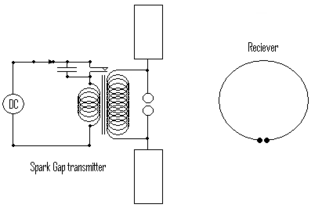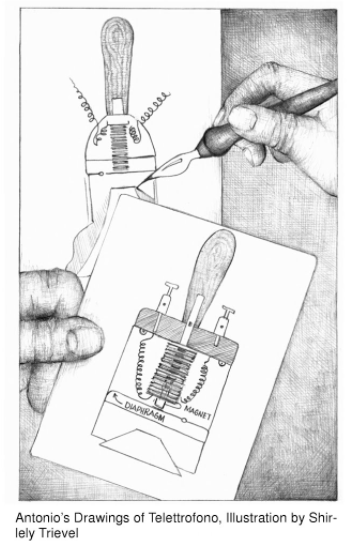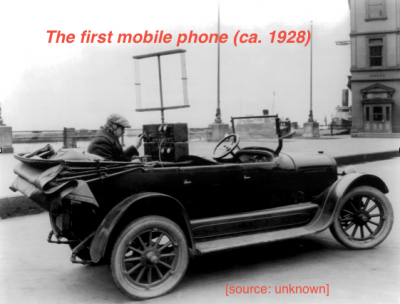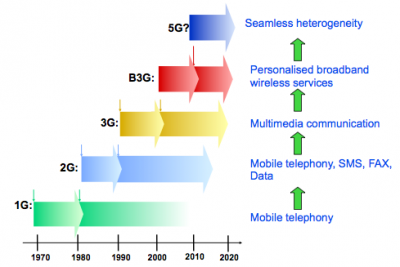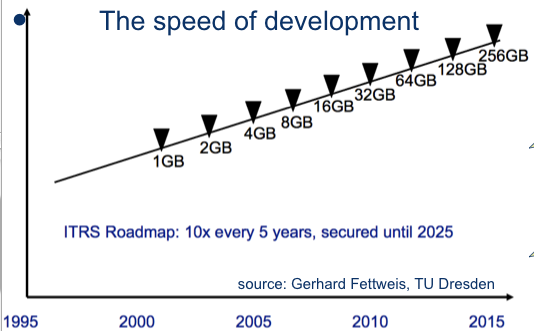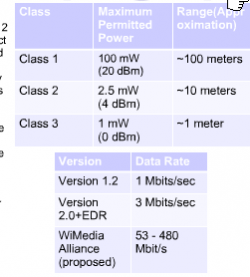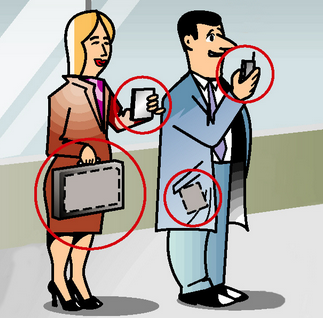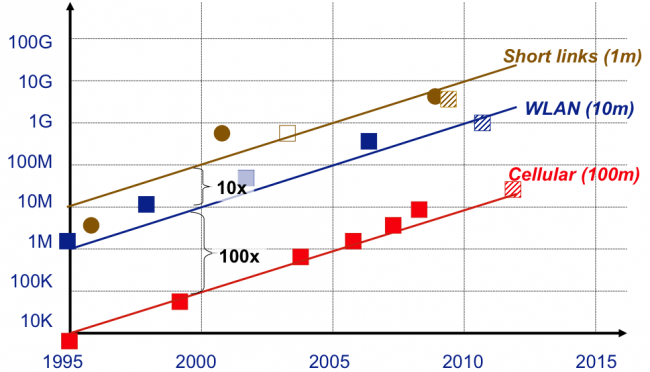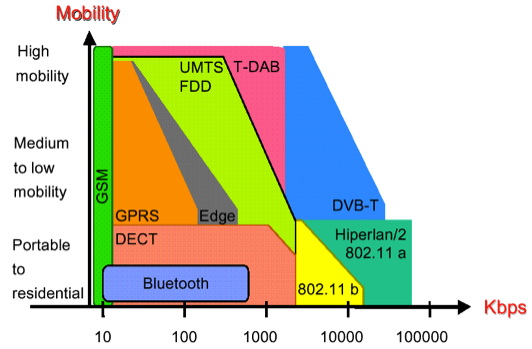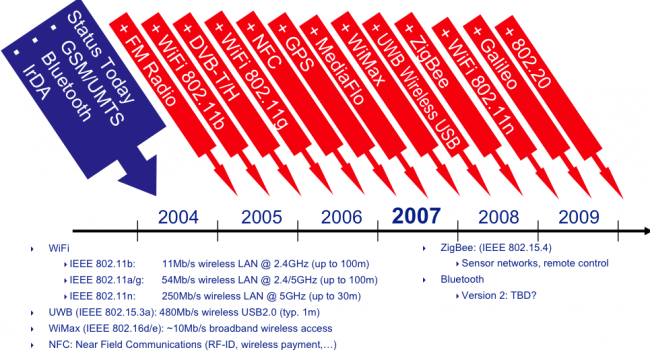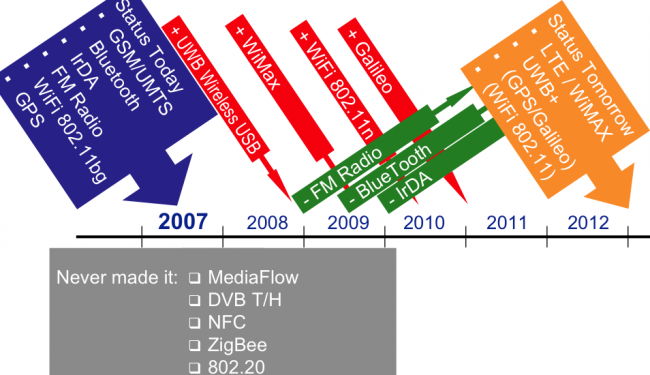UNIK4700/9700-Introduction
| Wiki for ITS | ||||||
|---|---|---|---|---|---|---|
|
UNIK4700/9700-Introduction
| Course | UNIK4700, UNIK9700 |
|---|---|
| Title | Introduction |
| Lecture date | 2017/08/22 1300-1600, room 308@UNIK |
| presented | by Josef Noll, Maghsoud Morshedi |
| Objective | This lecture provides an introduction to the topic. It will address* Radio* Systems* MobilityThe lecture will also include details on the expected outcome, the deliverables and the (optional) exam |
| Learning outcomes | Having joined this lecture, you will
|
| Pensum (read before) | You should have registered for this course :-)
Please read also how to search for literature: Search_for_literature |
| References (further info) | References:
|
| Keywords | Radio, Mobility, Mobile Systems, Capacity, Sustainability Goals |
this page was created by Special:FormEdit/Lecture, and can be edited by Special:FormEdit/Lecture/UNIK4700/9700-Introduction.
About the course
Motivation, Introduction and Topics, see Media:UNIK4700-L1-Overview.pdf
Regarding assignments
- give us a month before assignment
- Alternatives: a) selected papers Choose
- or b) own topic
Other info
- Google Community UNIK4700: https://plus.google.com/communities/107897964181233758835?cfem=1
- Search for literature
- Streaming at http://lux.unik.no/unik4700-jn/unik-20140829.wmv
- for following from Scheme or any other places, please see information Video_conference
Lecture Notes
- Notes from 2017 Media:20170822_UNIK4700_notes.pdf
- Media:2016080_L1_UNIK4700_notes.pdf - lecture notes from 30Aug2016
- Media:20150828_l1_notes.pdf - lecture notes from 28Aug2015, including assignments
- Note: Slideshow working on UNIK4700:Introduction (first part)
- 29Aug2014 Lecture Notes: Media:20140829UNIK4700.pdf
- 2013 Lecture Notes: Media:UNIK4700-l1-h13.pdf
- Title
- UNIK4700 Introduction
- Author
- Josef Noll
- Footer
- UNIK4700/9700-Introduction
- Subfooter
- UNIK4700
⌘ Overview UNIK4700, UNIK9700
Radio and Mobility
- first lecture
- sign up to cwi.unik.no Signup
- confirm your email
- add yourself to UNIK4700H16Participants
- what do you expect
- discuss
- tell
Goal of the course,
- what to achieve
- how to achieve it
Examen
- what to I expect
⌘Meeting calendar
- will be published through this wiki: http://cwi.unik.no/wiki/UNIK4700
- see also lectures from earlier years
based on
- your topics
- the goal we want to achieve
⌘ What to achieve
Academic work
- how we build up list of references
- modelling approach
- detailed list of topic (next slide)
⌘Examen
- Presentation of research topic (mandatory), home work on comparison of selected topics (60 %) and simulation work (40 %).
- The student may ask for an oral exam in which case the home work on comparison of selected topics counts 50%, the simulation work 30% and the oral exam 20%.
Mandatory
- knowledge of presentation material - "how you presented"
- presentation and analysis of 3-4 papers
- programming of user, context....
⌘Evaluation/Grade
Expectations for your presentation
- Define what to present
- Present it such that your colleagues can understand
- Facts/Reference-based presentation
- Evaluate your own work
- Checklist
- relevant for the course
- understandable
- your own evaluation
- scientific: "Don't guess, present references"
Character, Exam
For your own presentation
- focus, focus, focus - be aware of what you want to present, and what not
- make sure the others will understand what you present
- come up with challenges/unsolved issues/your expectation towards that technology
not basis for grade are
- questions during lectures
Alternativer
- evtl "mini-eksamen" i slutten av hver time, spørsmål om spesielle områder
⌘ Goals Radio
- Understand that "radio is not just another IP connection"
- Set-up a good course
- Involve you in giving the course
Radio
- get a basic understanding of radio communication
- can explain the characteristics of radio propagation
- get a feeling for wave propagation and the attenuation
⌘Goals Mobility
- identify the factors for mobility management
- know the characteristics of current mobility schemes
- address topics in current research
Mandatory
- knowledge of presentation material
- presentation and analysis of 3-4 papers
- simulation
Evaluation (draft)
- presentation of topics (own work)
- simulation results
- optional: (final exam)
⌘ Assigned topics
List of assignments UNIK4700:Assignments
Disclaimer: This compendium provides information on aspects of radio wave propagation, antennas, system aspects, and handover schemes for mobile and wireless systems. The compendium is foreseen for the UNIK4700 course on Building Mobile and Wireless Networks, and is kept on the system aspects level. UNIK has several courses on Radio and Network technologies as part of the Wireless Networks and Security (WNaS) research area.
UNIK 4700 Building Mobile and Wireless Networks
⌘ History and Future
- History of wireless communications
- Maxwell, Hertz, Marconi and other pioneers
- 1G, 2G ... 5G networks
- Frequencies and Standards
- Future Challenges
⌘ TOC - Basics of Communication
- Electromagnetic Signals
- Radio Communication Principles
- Digital communication: Nyquist, Signal/Noise Ratio
- Signal strength and Capacity: Shannon
⌘TOC - Antennas and Propagation
- Free Space Propagation
- Antennas, Gain, Radiation Pattern
- Multipath Propagation, Reflection, Diffraction
- Attenuation, Scattering
- Interference and Fading (Rayleigh, Rician, …)
- Mobile Communication dependencies
What have we learned?
- antenna characteristics and gain
- what happens if I double the frequency (900 - 1800 - 2400 MHz)?
- minimum GSM receiver sensitivity
- typical receiver power at 900 MHz (GSM channel sounder - rural)
- typical received power at 1800 MHz (GSM channel sounder - rural)
- difference City - rural - indoor
- principal operation of MIMO
⌘TOC - Propagation models
- Environments (indoor, outdoor to indoor, vehicular)
- Outdoor (Lee, Okumura, Hata, COST231 models)
- Indoor (One-slope, multiwall, linear attenuation)
⌘TOC System Comparison
- Proximity: RFID, NFC
- Short Range: ZigBee, Bluetooth, ANT+,...
- WLAN/Wifi/802.11...
- Mobile: GSM, UMTS, IMT-A (WiMAX, LTE)
⌘TOC - Mobility
⌘TOC - Network Building
- Future Networks: Heterogeneity, Basic Internet, Video Distribution Networks
- Coverage simulations
- Traffic simulations
- Network Capacity simulations
⌘The five myths of wireless
- Wi-Fi is faster than Ethernet. While the raw data rate of Wi-Fi (11 Mbps) may be faster than the original Ethernet (10 Mbps), Wi-Fi's throughput efficiency is always less. Why?
- The longer the transmission range, the better. That may be true for some wireless communications, but for wireless LANs, a greater transmission range often results in more users per cell and lower per-user throughput. Why?
- Wireless networks can be dangerous to your health. Almost all wireless LANs have radio output levels of less than 100 milliwatts (20 dBm). Is output power the real measure?
- 802.11g will make 802.11a obsolete. Lots of people think that 802.11g will kill 802.11a because it offers the same data rate as 802.11a (54 Mbps) plus backward compatibility with 802.11b. Other factors?
- Wireless LANs are inherently insecure. Yes, there are security issues with the original 802.11b specification, but there are plenty of ways, including the use of VPNs and security gateways, to make wireless as secure as wired. True?
Note: 802.11 is sending with different speeds for header and payload. Header is always transmitted at lowest speed, why?
⌘TOC on AA1-History
⌘The real researchers
⌘Heinrich Hertz - The electromagnectic wave
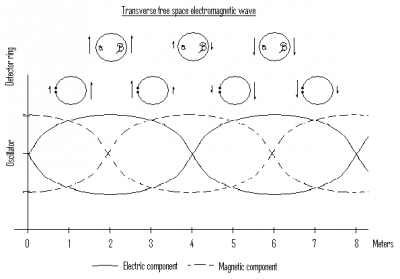 Hertz did not realise the practical importance of his experiments. He stated that,
"It's of no use whatsoever[...] this is just an experiment that proves Maestro Maxwell was right - we just have these mysterious electromagnetic waves that we cannot see with the naked eye. But they are there." [3]
Hertz did not realise the practical importance of his experiments. He stated that,
"It's of no use whatsoever[...] this is just an experiment that proves Maestro Maxwell was right - we just have these mysterious electromagnetic waves that we cannot see with the naked eye. But they are there." [3]
Asked about the ramifications of his discoveries, Hertz replied, "Nothing, I guess." [3]
Note
The experiments, demonstrating the relation between the electrical and the magnetic component of the electromagnetic wave, was probably the most important discovery of Heinrich Hertz.
⌘Inventor: Guglielmo Marconi
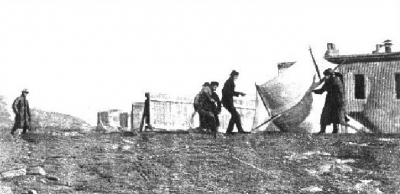 Guglielmo Marconi (1874 - 1937) experimented with Hertz waves in 1894/1895
Guglielmo Marconi (1874 - 1937) experimented with Hertz waves in 1894/1895
- used 50000 UK pound on a transatlantic experiment in 1901
- brought electromagnetics to life
[Source:Magne Pettersen, Wikipedia]
Note: Marconi
The first experiment failed, as a storm took down the antenna, and Marconi got bankrupt. But he managed to establish new funds for the first transatlantic communication based on radio signals. Recommended reading https://en.wikipedia.org/wiki/Guglielmo_Marconi
⌘Inventor: Antonio Meucci
- Invented the phone in 1856
- transferred voice from one room to another one
- surveillance of an ill person
- registered patent in 1871
- failed to name "electromagnetics"
- Graham Bell patented in 1876
[Source: Sandra Meucci, "Antonio and the electric scream: The man who invented the telephone", Branden Books, 2010]
⌘The real researchers - Graham Bell
- Graham Bell (1874 -1922) invented the phone,...
- but who invented also the mobile phone back in 1924?
Bell considered his most famous invention an intrusion on his real work as a scientist and refused to have a telephone in his study
[Source:Magne Pettersen, Wikipedia]
⌘AA2-Mobile Generations
⌘History of wireless communications
while 1G and 2G were all about radio interfaces,
- 3G and Beyond 3G (B3G) are all about services
- 4G is using mobile broadband everywhere
- 5G will be truly heterogeneous network
Comments
⌘Speed of technology
- "There might be a need for 5 computers" (1943 Watson(?), 1951 Hartree)
- Mobile: NMT, GSM, GPRS, EDGE, UMTS, 3G, HSDPA, SMS, EMS, MMS,... DVB-H,...
Comments
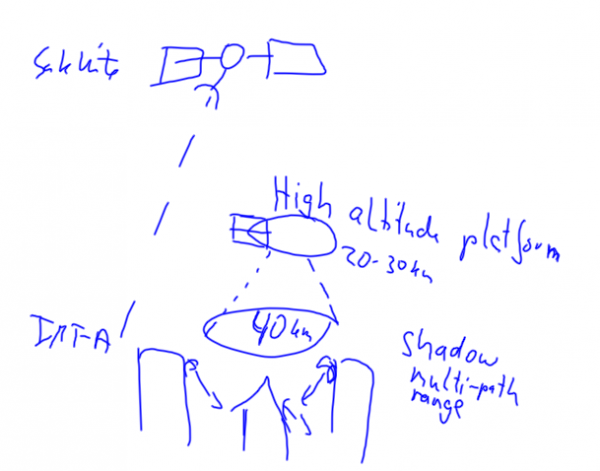 Future communication systems, composed of IMT-A (ground), High altitude platform (HAP) and satellite
Future communication systems, composed of IMT-A (ground), High altitude platform (HAP) and satellite
%Wireless standardisation forums
- ITU-T
- ETSI
- IEEE
- 3GPP (3G Partnership Project) and 3GPP2
- Bluetooth SIG, zigbee alliance
and a lot of others addressing interworking
- OMA (open mobile alliance)
- UMTS forum
- ...
⌘Frequency spectrum
⌘Wireless technologies
Ultra short range
- RFID, NFC
Vicinity
- Bluetooth, WiMedia,
- Zigbee, ANT+, Bluetooth Low Energy (BLE)
Local area
- Wireless LAN, 802.11 family
- Wireless telephony: DECT (Digital Enhanced Cordless Telecommunications)
Mobile Communications:
- 1G: NMT
- 2G: GSM
- 3G: UMTS
- 4G: LTE - IMT-A
- 5G
Long Range Wide Area Network (LPWAN)
- LoRa,
- Sigfox,
- Ingenu-RPMA,
- DASH7,
- Weightless
Mobile satellite communication:
- Geostationary (Inmarsat A, C, M) or low orbit (e.g. Iridium)
⌘Trend: Personal Networks
Interconnectivity
|
⌘Expectations towards global coverage
- According to Ericsson, Mobile Technologies are available for 50% of the world's population (2013), and the coverage will increase to 75% by 2017.
- According to Internet.org (Facebook, Opera Software, ....), only 1/3 of the world's population has access to the Internet (2013).
- An extrapolation by the Basic Internet Foundation points out that even in 2017 about 45% of the population will not have access to Internet, mainly due to affordability. Thus they promote the free access to basic information of the Internet, being text and pictures.
⌘ Comparison of communication technologies
[Presentation G. Fettweis, IEEE VTC forum Baltimore], http://www.ieeevtc.org/plenaries/vtc2007fall/28.pdf
⌘ Wireless network types
⌘Handset challenges - today
[Presentation G. Fettweis, IEEE VTC forum Baltimore], http://www.ieeevtc.org/plenaries/vtc2007fall/28.pdf
⌘Handset challenges - tomorrow
[Presentation G. Fettweis, IEEE VTC forum Baltimore], http://www.ieeevtc.org/plenaries/vtc2007fall/28.pdf
Note:
G. Fettweis has focus on radio technology, not on applications and "costs" for usage. In the application area, NFC is a replacement of contactless cards for payment, using the same security mechanisms. With respect to "sensor networks" and low energy consumption, the limitations to UWB+ will not fulfil those needs.
⌘Summary
Focus on three communication areas
- ultra short range, e.g. NFC
- vicinity, e.g. Bluetooth
- local area, e.g. WLAN
- mobile communications, e.g. LTE
